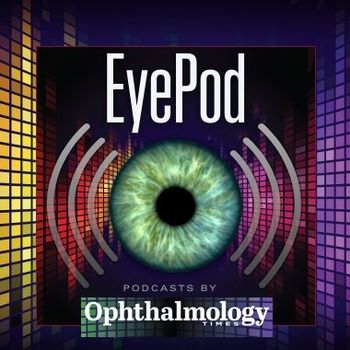
How often do you prescribe glasses in very young children?
The glasses prescribing patterns of a pediatric ophthalmology group differed from the guidelines issued by the American Academy of Ophthalmology for infants less than age 1 year but were similar for children age 1 to 3 years, a study found. The study also demonstrated the efficacy of using electronic medical records for assessing physician decision-making.
Take-home message: The glasses prescribing patterns of a pediatric ophthalmology group differed from the guidelines issued by the American Academy of Ophthalmology for infants less than age 1 year but were similar for children age 1 to 3 years, a study found. The study also demonstrated the efficacy of using electronic medical records for assessing physician decision-making.
By Nancy Groves, Reviewed by Gil Binenbaum, MD, MSCE
Philadelphia- The glasses prescribing patterns of a small group of pediatric ophthalmologists differed from recommendations from the American Academy of Ophthalmology (AAO) for children under age 1, although they were similar for children in other age groups. This type of analysis, derived from electronic medical records (EMR), could be used in large-scale assessments of prescribing patterns and visual outcomes, said Gil Binenbaum, MD, MSCE, attending surgeon in the Division of Ophthalmology at The Children’s Hospital of Philadelphia and senior author of the study.
Dr. Binenbaum and colleagues wanted to assess at what level of refractive error the seven pediatric ophthalmologists in their group at CHOP actually prescribed glasses and, secondly, to compare their prescribing patterns to the AAO guidelines, which are only for children aged 0-3. Additionally, they wanted to demonstrate how using EMR could be a more efficient method of collecting research data than using paper records.
The investigators conducted a retrospective analysis of records of 16,011 children who had a refraction at CHOP from 2009 to 2013, recording the cycloplegic refraction results for each child and whether a prescription had been given at the same visit. Since the investigators were interested in the decision for each refraction rather than for the child, individual refractions were treated as isolated events.
Investigators reviewed 19,372 refractions, including 7,421 for ages 0-3 years; 6,897, 3-8; and 5,054, 8-18. The proportions of glasses prescribed were stratified by age, type of refractive error, and amount of refractive error.
“The key piece of data here was the decision that was made by the pediatric ophthalmologist as to whether to prescribe glasses or not,” Dr. Binenbaum said.
To interpret the data, the investigators created tables for each type of refractive error (myopia, hyperopia, astigmatism, and anisometropic myopia, hyperopia, and astigmatism). The tables were organized by degree of refractive error and age of the child, and each cell showed the percentage of time glasses were prescribed for a given degree and age.
“We found a similar pattern across all types of refractive error,” Dr. Binenbaum said. “In general, it was very uncommon for this group of ophthalmologists to prescribe before age 6 months, regardless of how big the refractive error was. And only between ages 6 and 12 months did we begin to see for very high levels â such as myopia greater than -4.00 D â prescribing more than half the time.”
For children under 1 year of age with more moderate refractive errors, prescribing rates were low, generally less than 15%. The tables also showed that as children grew older, the thresholds for prescribing went down. “At younger ages, a high degree of error was needed to prescribe glasses, and as the children got older, approaching school age, the thresholds went down,” Dr. Binenbaum.
The data for children ages 0-3 years in all the categories were then compared to the AAO prescribing guidelines; 7,421 refractions were reviewed.
“What we found was that in the first year of life, for kids who had refractive errors above the thresholds recommended by the AAO for prescribing glasses, as a group we prescribed glasses less than half the time,” Dr. Binenbaum said. “Our ranges were from a low of 14% to a high of 50%, depending on the type of refractive error. In our clinical approach, we don’t seem to agree with the guidelines.”
However, for children ages 1-2 and 2-3, the CHOP group’s prescribing patterns agreed with the AAO guidelines 55% to 100% of the time. One exception was high astigmatism, in which the group prescribed glasses about half as often as recommended.
One limitation of the study is that by using EMR and not manually examining patient charts, investigators weren’t able to control for some confounding factors, such as degree of cognitive disability, that could explain the decision not to prescribe glasses, Dr. Binenbaum said. However, the approximations were still sufficiently precise to answer the study question on the group’s general prescribing patterns.
The results showed that EMR data could help facilitate large-scale studies. Such data can be used for self-assessment, prompting discussions of the best clinical approach and standardizing care within the group and with other groups of ophthalmologists, Dr. Binenbaum said.
Gil Binenbaum, MD, MSCE
Email:
215-590-1858
Co-authorLindsay Dawson, MD, presented this study at the American Academy of Ophthalmology annual meeting in November 2014. She is an incoming ophthalmology resident at the Scheie Eye Institute, University of Pennsylvania.
Disclosure: Dr. Binenbaum has received grant support from the National Institutes of Health.
Newsletter
Don’t miss out—get Ophthalmology Times updates on the latest clinical advancements and expert interviews, straight to your inbox.













































